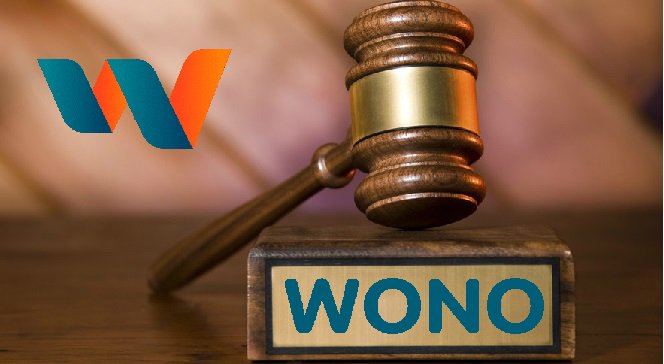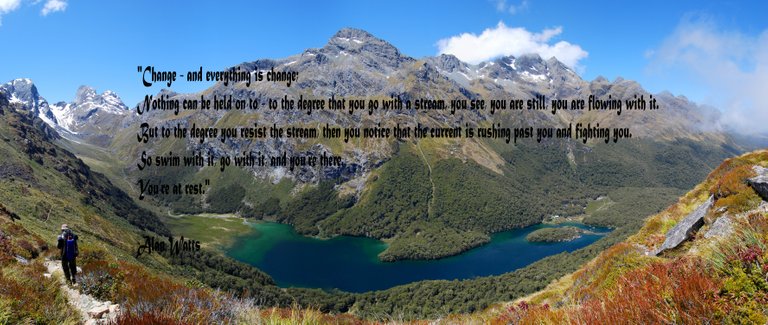
I arrived at the fifth part of my WONO article series and are slowly coming to an end. In the previous four parts, I have already looked at the different parts of the platform and will finish this today to finish in the final sixth part of the series, with a team presentation and my conclusion. The links to the already published parts can be found at the bottom.
However, as always, I would like to point out that my articles are never and in no way any financial advice. They represent solely my opinion on a project nothing more, and I have studied them extensively for my purpose. As with any decision in life, everyone has to self-responsible to get their own opinion based on research. I leave the advice on financial matters to the professionals.
To run a decentralised platform smoothly, it will require two more elements. In the case of the WONO project, these are the Arbitrator and the Guarantor. If we do not fool ourselves, there will always be problems as long as people come into contact and act together. So you need simplifying institutions as soon as issues arise. However, before I get to this vital position in a decentralised marketplace, I would like first to explain the feature of the WONO ecosystem namely the Guarantor.
Why do you need the Guarantor?
When we confront each other as people and buy something directly from one another in a real-world market, we can look at the goods immediately and see if they meet our quality standards. We hold a book in our hands or look at a used bicycle, and by examining it, we determine the quality. In the digital world of the blockchain, this is not possible in this way. In addition to this fact, we have to deal with another issue, when it comes to the sharing market. Goods like property or vehicles, for instance, are mostly far away from us, such as rental apartments in a holiday destination. So we need an entity who can do this job for us. We must be able to trust them, and in return, there must be an incentive to perform the task conscientiously. However, the WONO platform can not guarantee this, because, in the example of the holiday flat, a person of trust would have to travel directly to this place and check the apartment carefully, and that every single time. An impossible task, besides, we must consider that WONO will become a worldwide platform.

What the guarantor does instead is to minimise the risk of Deal failure. For this, he sets his token and thus vouches for the conclusion of the Deal, while the sum staked can be higher than the total value of the order. As is usual with a guarantee, the injured party receives compensation in the event of a failure of the deal. In a completed Deal, the Guarantor gets back his used tokens and a bonus from the insurance part of the commission. This trait looks to me like an exciting concept, and I am curious how the users of the platform will accept this feature.
Why do I consider the guarantor's feature as something essential and at the same time recognise the uniqueness of it?
There is a specific function for me in the Guarantor position that makes it so unique. Each participant in a deal can be a Guarantor at the same time and thus due to the bonus he gets on a successful conclusion of the Deal, additionally ensure that everything runs smoothly. The WONO team has built in a significant hedge, which in my view is something entirely new. Congratulations to those who had this idea.
Let's get to the Arbitrator.
We all know him from all the different sports as a referee, where he plays a similar role as on the WONO platform. In our case, the decentralised platform of WONO, the referee decides a dispute which happened after the conclusion of the contract the different parties have. He determines which side of the deal has a penalty to pay and who will be compensated by it. The basis for his decision is enshrined in the Deal, as I explained in my fourth article. The arbitral tribunal is composed of various arbitrators, all of whom used their tokens as election marks. The case is decided that way depending on which party gets the highest number of token attributed to it, as the injured party applies. After a decision has been made in this way, each of the referees gets back his token and of course an arbitrage bonus paid by the insurance part of the commission. When voting, there is no limit of token which can be used for staking.

This point could be considered as not well thought out, because, in a dispute, it could well happen that the party who caused damage commissioned someone who can then decide the choice in his favour with a large sum of staking token. Fraud would be the result here. However, the WONO team has taken care of this as well. The first thing to note is that the bonus the arbitrators receive is not based on the number of tokens they use, but on the total value of the Deal.
Just imagine a deal worth a sum equivalent to, say, $20000, which is significantly above average. It may be a rental of a villa on the Pacific Coast. The average WONO's commission is 3% which is equivalent to $600. Arbitrator's part is 25% of this sum. It's $150. That's not much to start a business of fraud of it and at the same time to risk the needed good reputation on the platform. WONO's arbitration mechanism is designed in a way that makes a fraudulent business not so attractive and profitable. WONO will have a support centre, so if someone faces an unfair arbitrage, he or she can send a complaint. If the investigation proves that the arbitrator acted dishonesty, his rating will be dropped. As a result, nobody would sign deals with him, and since all users pass through the KYC procedure, it's a one-way ticket.
I want to conclude the technical part of the WONO project, and I have to admit that there are more details which lead to an even deeper understanding. To know every last aspect, you have to study the whitepaper carefully. An article series is not enough in this case. In my final sixth article, I will introduce the team in more detail and draw a conclusion.
Upvoting my work on Steemit does not hurt you, but it does mean a lot to me. Thanks a lot for this.
The following links will take you to all relevant pages and channels of the WONO project. Please use them to get a full understanding of every aspect:
Website: https://wono.io/
Telegram: https://t.me/wonoworld
Facebook: https://fb.me/wonoworld
Twitter: https://twitter.com/wonoworldhttps://medium.com/@wonoworld
Medium: https://medium.com/@wonoworld
Steemit: https://steemit.com/@wonoworld
Bitcointalk: https://bitcointalk.org/index.php?topic=3398728
Linkedin: https://www.linkedin.com/company/wonoworld/
Instagram: https://www.instagram.com/wonoworld/
Reddit: https://www.reddit.com/user/wonoworld
Github: https://github.com/wonorepo
Youtube: https://www.youtube.com/channel/UCiOBgJO_VZm-rDXLMi6IP2A
White Paper: https://wono.io/assets/i18n/en/wp
Check out my first WONO article here: https://steemit.com/english/@desposyni/wono-the-blockchain-p2p-marketplace-for-everyone-part-1-overview
Check out my second WONO article here: https://steemit.com/blockchain/@desposyni/wono---the-blockchain-p2p-marketplace-for-everyone---part-2-the-upcoming-ico
Check out my third WONO article here: https://steemit.com/blockchain/@desposyni/-wono---the-blockchain-p2p-marketplace-for-everyone---part-3-a-more-in-depth-look
Check out my fourth WONO article here: https://steemit.com/blockchain/@desposyni/wono-the-blockchain-p2p-marketplace-for-everyone-part-4-the-deal-function

Congratulations, Your Post Has Been Added To The Steemit Worldmap!
Author link: http://steemitworldmap.com?author=desposyni
Post link: http://steemitworldmap.com?post=wono---the-blockchain-p2p-marketplace-for-everyone---part-5-arbitrator-and-guarantor
Want to have your post on the map too?